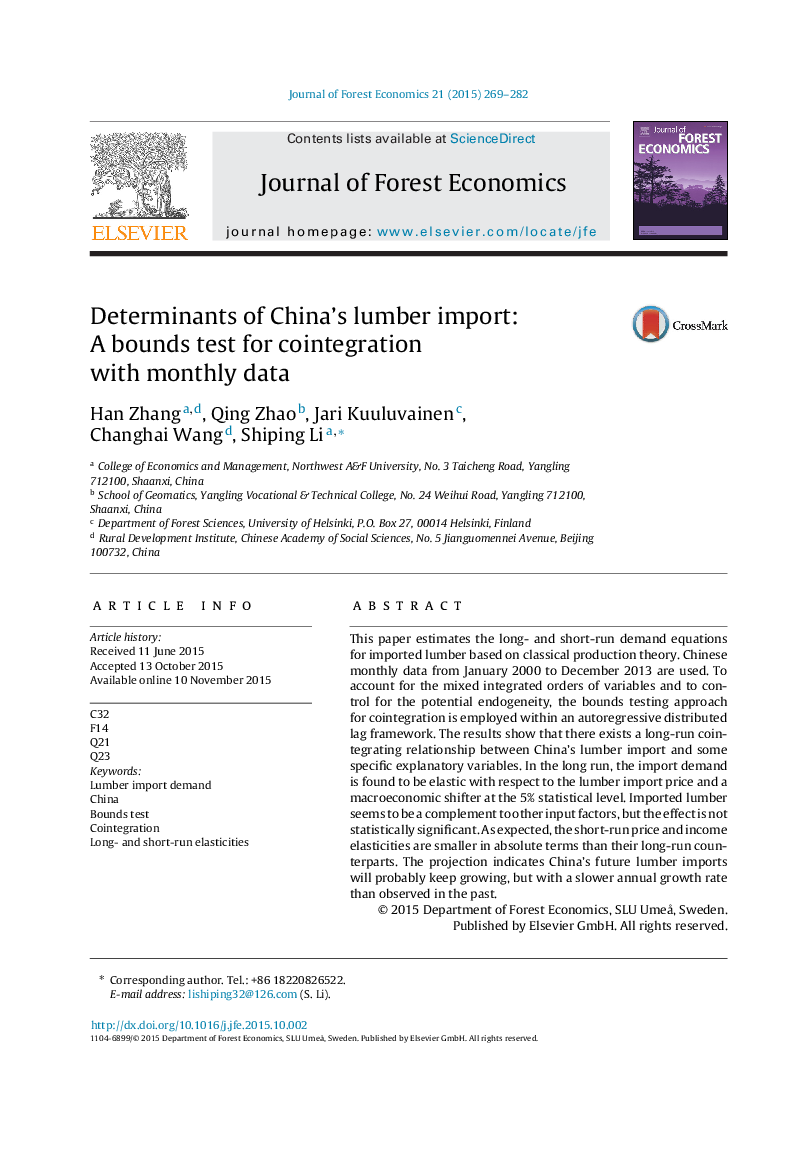| Article ID | Journal | Published Year | Pages | File Type |
|---|---|---|---|---|
| 92295 | Journal of Forest Economics | 2015 | 14 Pages |
This paper estimates the long- and short-run demand equations for imported lumber based on classical production theory. Chinese monthly data from January 2000 to December 2013 are used. To account for the mixed integrated orders of variables and to control for the potential endogeneity, the bounds testing approach for cointegration is employed within an autoregressive distributed lag framework. The results show that there exists a long-run cointegrating relationship between China's lumber import and some specific explanatory variables. In the long run, the import demand is found to be elastic with respect to the lumber import price and a macroeconomic shifter at the 5% statistical level. Imported lumber seems to be a complement to other input factors, but the effect is not statistically significant. As expected, the short-run price and income elasticities are smaller in absolute terms than their long-run counterparts. The projection indicates China's future lumber imports will probably keep growing, but with a slower annual growth rate than observed in the past.
